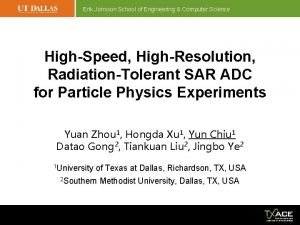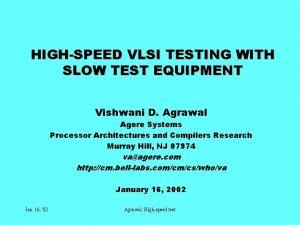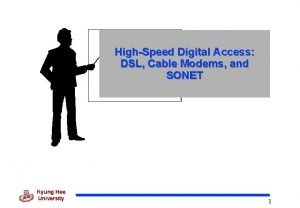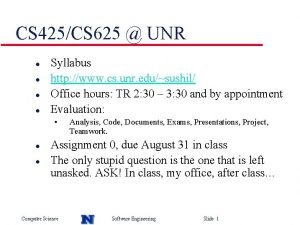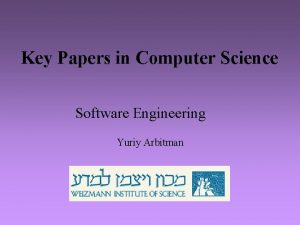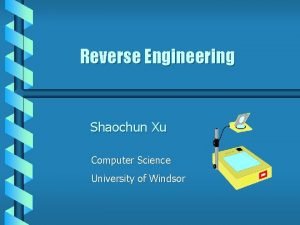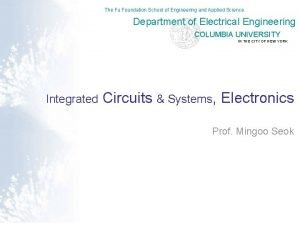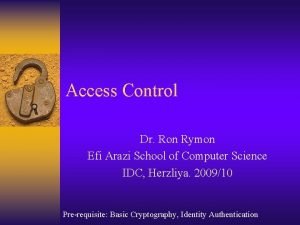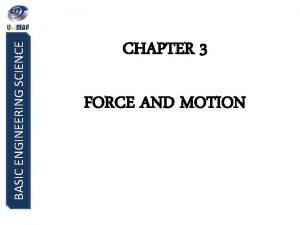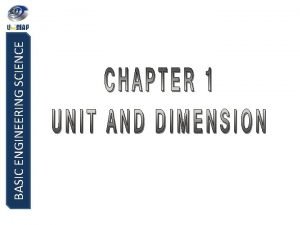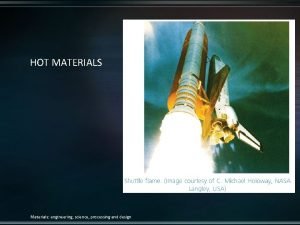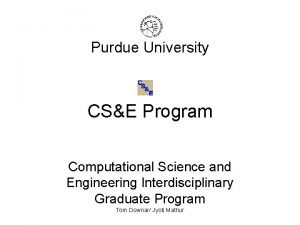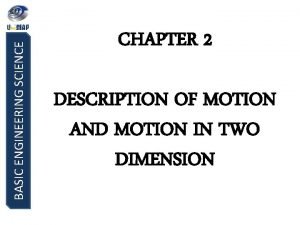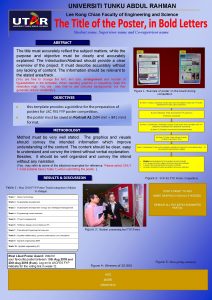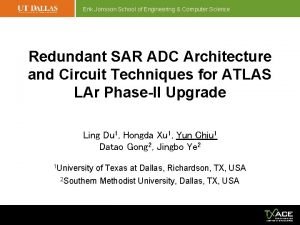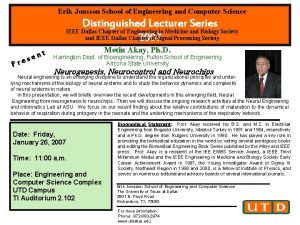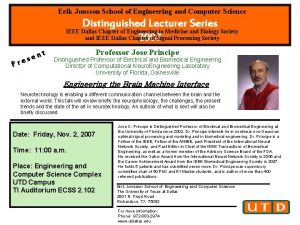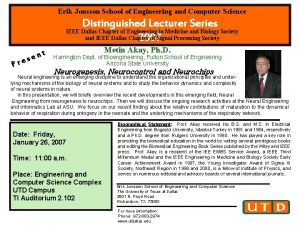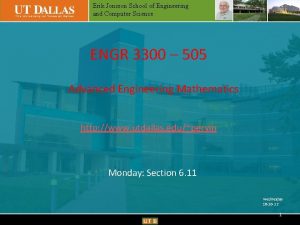Erik Jonsson School of Engineering Computer Science HighSpeed




































- Slides: 36

Erik Jonsson School of Engineering & Computer Science High-Speed, High-Resolution, Radiation-Tolerant SAR ADC for Particle Physics Experiments Yuan Zhou 1, Hongda Xu 1, Yun Chiu 1 Datao Gong 2, Tiankuan Liu 2, Jingbo Ye 2 1 University of Texas at Dallas, Richardson, TX, USA 2 Southern Methodist University, Dallas, TX, USA

Outline • Introduction • Recent Advances in SAR ADCs • Our Recent 12 -bit SAR ADC Works § 45 -MS/s SAR Prototype (0. 13μm, 2010) § 160 -MS/s SAR Prototype (40 nm, 2014) • Total Ionization Dose (TID) Results (40 nm) • Summary TWEPP 2014 -2 - 2014 -09 -24

Outline • Introduction • Recent Advances in SAR ADCs • Our Recent 12 -bit SAR ADC Works § 45 -MS/s SAR Prototype (0. 13μm, 2010) § 160 -MS/s SAR Prototype (40 nm, 2014) • Total Ionization Dose (TID) Results (40 nm) • Summary TWEPP 2014 -3 - 2014 -09 -24

ADC in Phase-II LAr Readout FEB • • High resolution: 12 -14 bits High speed: 40 -80 MS/s Low power, low area Radiation tolerant Potential Phase-II Upgrade FEB (On detector) Detector Output Signal Preamp Analog Shaper ADC TWEPP 2014 -4 - MUX & Serializer To Back-end Optical Links 2014 -09 -24

Architecture Choice: SAR vs. Pipeline SAR • Pipelined ADC: High-gain residue amplifier hard to scale w/ process • SAR ADC: low-power, low-area is a strong candidate for Phase-II TWEPP 2014 -5 - 2014 -09 -24

Outline • Introduction • Recent Advances in SAR ADCs • Our Recent 12 -bit SAR ADC Works § 45 -MS/s SAR Prototype (0. 13μm, 2010) § 160 -MS/s SAR Prototype (40 nm, 2014) • Total Ionization Dose (TID) Results (40 nm) • Summary TWEPP 2014 -6 - 2014 -09 -24

TWEPP 2014 -7 - 2014 -09 -24

Outline • Introduction • Recent Advances in SAR ADCs • Our Recent 12 -bit SAR ADC Works § 45 -MS/s SAR Prototype (0. 13μm, 2010) § 160 -MS/s SAR Prototype (40 nm, 2014) • Total Ionization Dose (TID) Results (40 nm) • Summary TWEPP 2014 -8 - 2014 -09 -24

12 -bit, 45 -MS/s, 0. 13 -μm CMOS ADC TWEPP 2014 Sub-binary DAC ODC REDUNDANCY CAL -9 - 2014 -09 -24

Sub-Binary DAC and Redundancy Binary Super-binary Sub-binary • Built-in redundancy helps combat dynamic conversion errors (DAC mismatch, comparator, DAC settling, even SEU) • Redundancy is also needed for digital claibration TWEPP 2014 - 10 - 2014 -09 -24

Offset Double Conversion (ODC) Digital Post-Processing • ODC is implemented in DAC w/ a small cap TWEPP 2014 - 11 - 2014 -09 -24

How to determine Bit Weights? Is the transfer curve shift-invariant? TWEPP 2014 - 12 - 2014 -09 -24

How to determine Bit Weights? Is the transfer curve shift-invariant? TWEPP 2014 - 13 - 2014 -09 -24

How to determine Bit Weights? Is the transfer curve shift-invariant? TWEPP 2014 - 2014 -09 -24

How to determine Bit Weights? • Shift-invariant ONLY when the transfer curve is completely linear! • Non-constant difference b/t D+ and D− reveals bit weight information TWEPP 2014 - 15 - 2014 -09 -24

12 -bit, 45 -MS/s, 0. 13 -μm CMOS ADC Sub-binary DAC ODC Die size: 0. 06 mm 2 • 12 b, 45 MS/s in FG mode • 3 -m. W power (36. 3 f. J/step) • Most read JSSC article Nov. 2011 TWEPP 2014 - 16 - 2014 -09 -24

Measured ADC Spectra (BG Mode) SNDR = 60. 2 d. B SFDR = 66. 4 d. B THD = -61. 7 d. B SNDR = 70. 7 d. B SFDR = 94. 6 d. B THD = -89. 1 d. B After Cal. Before Cal. TWEPP 2014 - 17 - 2014 -09 -24

Comparison with 12 -bit ADCs (@ time of publication) 46 f. J/step @ 22. 5 MS/s 31 f. J/step @ 45 MS/s 0. 06 mm 2 Total Power: 3. 0 m. W TWEPP 2014 - 18 - 2014 -09 -24

Outline • Introduction • Recent Advances in SAR ADCs • Our Recent 12 -bit SAR ADC Works § 45 -MS/s SAR Prototype (0. 13μm, 2010) § 160 -MS/s SAR Prototype (40 nm, 2014) • Total Ionization Dose (TID) Results (40 nm) • Summary TWEPP 2014 - 19 - 2014 -09 -24

12 -bit, 160 -MS/s, 40 -nm CMOS ADC • (5 b + 8 b) synchronous two-step pipelined SAR architecture • First-stage capacitor weights identified w/ opportunistic DAC dither TWEPP 2014 - 2014 -09 -24

Subranging, Swing, and Linearity 1 -bit redundancy tolerates offset • Smaller output swing for residue amplifier • Compensated by 2 nd stage SAR ADC ― Increased resolution (7 bit 8 bit) ― Scaled reference voltage (Vref 0. 5 Vref) TWEPP 2014 - 21 - 2014 -09 -24

Simple Residue Amplifier • Two-stage amplifier provides ~ 30 -d. B gain • Gain error is lumped into bit weights and calibrated TWEPP 2014 - 22 - 2014 -09 -24

Second-Stage SAR ADC • Reference voltage is effectively halved • Minimal loading determined by k. T/C noise TWEPP 2014 - 23 - 2014 -09 -24

Die Photo 300μm 139μm Clock Sub& ADC 1 PN Gen. Integrator + DAC Sub. ADC 2 Sub. ADC 3 Sub. ADC 4 Sub. ADC 5 MDAC 1 MDAC 2 MDAC 3 MDAC 4 40 -nm digital CMOS process (die size = 0. 042 mm 2) TWEPP 2014 - 2014 -09 -24

Measured ADC Dynamic Performance fs = 160 MHz after cal. fin = 25 MHz after cal. f. Nyquist=80 MHz fs=160 MHz fin [MHz] TWEPP 2014 fs [MHz] - 25 - 2014 -09 -24

Power Breakdown (VLSI’ 14 Version) Analog 1. 1 V 2. 8 m. W (53. 6%) • Total power is ~ 5 m. W at 160 -MS/s operation TWEPP 2014 - 26 - 2014 -09 -24

TWEPP 2014 - 27 - 2014 -09 -24

Outline • Introduction • Recent Advances in SAR ADCs • Our Recent 12 -bit SAR ADC Works § 45 -MS/s SAR Prototype (0. 13μm, 2010) § 160 -MS/s SAR Prototype (40 nm, 2014) • Total Ionization Dose (TID) Results (40 nm) • Summary TWEPP 2014 - 28 - 2014 -09 -24

TID Test of 40 -nm CMOS SAR ADC • DUT under X-ray radiation when powered up w/ clock input. • ADC performance (e. g. , SNDR, SFDR, power, etc. ) measured after irradiation is complete. TWEPP 2014 - 29 - 2014 -09 -24

Measured SNDR and SFDR @ 80 MS/s TWEPP 2014 - 30 - 2014 -09 -24

Measured SNDR and SFDR @ 160 MS/s TWEPP 2014 - 31 - 2014 -09 -24

Annealing (fs = 80 MS/s) TWEPP 2014 - 32 - 2014 -09 -24

Annealing (fs = 160 MS/s) TWEPP 2014 - 33 - 2014 -09 -24

Measured ADC Power TWEPP 2014 - 34 - 2014 -09 -24

Outline • Introduction • Recent Advances in SAR ADCs • Our Recent 12 -bit SAR ADC Works § 45 -MS/s SAR Prototype (0. 13μm, 2010) § 160 -MS/s SAR Prototype (40 nm, 2014) • Total Ionization Dose (TID) Results (40 nm) • Summary TWEPP 2014 - 35 - 2014 -09 -24

Summary • High-resolution and high-speed SAR ADC is a strong candidate to meet the stringent requirements in HEP experiments • The preliminary irradiation test (TID) results further highlight the feasibility of SAR ADC in deeply scaled CMOS processes for HEP applications • Low power and small die size of SAR present great potentials for spatial redundancy technique to be employed in single-event upset (SEU) treatment Thank you for your attendance! TWEPP 2014 - 36 - 2014 -09 -24
 Erik jonsson school of engineering and computer science
Erik jonsson school of engineering and computer science Erik jonsson school of engineering and computer science
Erik jonsson school of engineering and computer science Erik jonsson school of engineering
Erik jonsson school of engineering Highspeed test
Highspeed test Dsl highspeed
Dsl highspeed Weitzel and jonsson’s model of organizational decline
Weitzel and jonsson’s model of organizational decline Lars jonsson uppsala
Lars jonsson uppsala Dr thomas jonsson
Dr thomas jonsson Computer based system engineering in software engineering
Computer based system engineering in software engineering My favorite subject is biology
My favorite subject is biology Computer science vs software engineering
Computer science vs software engineering Ucf college of engineering and computer science
Ucf college of engineering and computer science Computer science and engineering unr
Computer science and engineering unr Ucla
Ucla Computer science software engineering
Computer science software engineering Computer science software engineering
Computer science software engineering Reverse engineering computer science
Reverse engineering computer science Columbia university power electronics
Columbia university power electronics Oussep
Oussep Klipsch school of electrical and computer engineering
Klipsch school of electrical and computer engineering Ron rymon
Ron rymon Forward engineering in software engineering
Forward engineering in software engineering Principles of complex systems for systems engineering
Principles of complex systems for systems engineering Elegant systems
Elegant systems Forward and reverse engineering
Forward and reverse engineering Lee kong chian faculty of engineering and science
Lee kong chian faculty of engineering and science Iit delhi material science
Iit delhi material science Chapter 3 force
Chapter 3 force Basic engineering and science
Basic engineering and science Materials: engineering, science, processing and design
Materials: engineering, science, processing and design National 5 engineering science
National 5 engineering science Readiness through integrative science and engineering
Readiness through integrative science and engineering Ece 570 purdue
Ece 570 purdue College of engineering science and technology
College of engineering science and technology Basic engineering science
Basic engineering science John jay science and engineering academy
John jay science and engineering academy Lee kong chian faculty of engineering and science
Lee kong chian faculty of engineering and science


